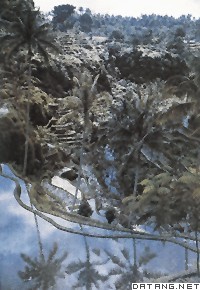1) enviromental geology


环境地学
2) environmental geoscience


环境地学
1.
In this paper, a comprehensive description of the environmental geoscience background of the hanging river and the streamflow break in the lower reaches of the Yellow River is made from a combination of geology and geography, meteorology and climatology,hydrology and sediment,vegetation and soil,as well as human and population.
本文从黄河流域的地质与地理、气象与气候、水文与泥沙、植被与土壤,以及人文与人口等方面综述了下游地上悬河与断流的环境地学背景,并从洪水与堤防、决口与改道、分流与运河,以及悬河与断流等方面分析了黄河下游河道变迁和现状问题。
3) geo science environment


地学环境
4) environmental geology


环境地质学
1.
The greatest difference between environmental geology and other branches of geological sciences lies in that environmental geology studies human activities as a geological agent, which has never been considered before.
环境地质学与其他地质学科的最大区别是,把人类活动作为一种地质作用营力加以研究,这是前所未有的。
2.
Ecoenvironmental geology applies the principles and knowledge of biology,environmentology,and geology to the solution of the problems caused by man's use and exploitation of the physical environment.
环境地质学研究人为地质活动所引起的灾害,地质环境学研究自然环境对人类的影响,两者是完全不同的学科。
3.
Professor Liu expressed his viewpoints on the environmental geology in following: The root of environmental geology based on the society requirement; the geo environmental system has a complete entity and correlative dependence with human.
1972年刘东生院士撰文发表了“环境地质学的出现”。
5) geological environmentology


地质环境学
1.
Environmental geology is concerned with the study of the hazards resulting from human geologi-cal activities and geological environmentology is concerned with the study of the impacts of the natural en-vironment on the human beings.
环境地质学研究人为地质活动所引起的灾害,地质环境学研究自然环境对人类的影响,两者是完全不同的学科。
6) Environmental geography


环境地理学
补充资料:环境地学
| 环境地学 environmental geoscience 以人-地系统为对象,研究其发展、组成和结构、调节以及控制、改造和利用的科学。环境科学的一个分支。随着人类的发展,人类活动的范围向下已进入地壳深处,向上已进入近地空间。所以广义地说,人-地系统可认为是人类和地球构成的系统。环境地学的孕育过程很早,18世纪在地理学中出现了人地关系学派,提出了和景观,图为印度尼西亚巴厘岛梯田景观地理环境决定论。19世纪后期,V.布拉什提出了可能论取代决定论,他的学生J.布吕纳在其《人地学原理》一书中,阐述了人地相关的原理,指出环境对人类的发展提供了各种可能性,人类则根据自己的意志选用这种可能性。第二次世界大战后,随着经济、技术的高度发展,出现了资源危机、环境污染等严重社会问题,从而推动人地关系研究的进一步发展,20世纪60年代出现了环境地学。
环境地学研究的内容和学科体系尚未完全定型,较为明确的分支学科有:环境地质学,主要研究人类活动和地质环境的相互关系;环境地球化学,主要研究人类赖以生存的地球环境的化学组成、化学作用、化学演化及其与人类相互关系;环境气象学,主要研究大气运动引起的污染物扩散、输送、迁移和转化过程,以及大气污染对天气和气候变化的影响;环境水文学,主要研究污染物在水圈中的含量、组成、状态、转化和运动规律及其对生态系统、人体健康的影响;环境土壤学,主要研究人类活动引起的土壤环境质量变化及其对人体健康、生态系统、社会经济的影响,探索调控和改善土壤环境质量的途径和方法。 |
说明:补充资料仅用于学习参考,请勿用于其它任何用途。
参考词条
